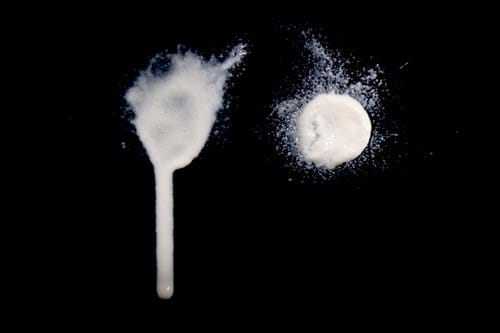
PCI Magazine: The Impact of Insoluble Cellulose Fibrils
...on the Rheology of Water-Based Acrylic Satin Paint Upon Tinting.
An article written by Otto Soidinsalo, Harrison Christopher Gallantree-Smith, and Scott Mouw from Borregaard, was published in the Paints & Coatings Industry magazine earlier this year.
The article introduction goes;
"It is commonly known that waterborne formulations still suffer from several issues, and it is not always possible to obtain the same performance as with solventborne systems. One of the typical challenges with waterborne systems is related to the behaviour of rheology modifiers in the presence of surfactants as well as under extreme pH conditions. The common rheology modifiers can be divided roughly into two categories, associative and non-associative. The former is typically sensitive to the presence of surfactants, and this is often seen after the tinting of the base paint. In most cases, the viscosity of the paint reduces as a consequence of disturbance in the associative network due to the surfactant’s presence in the tinting paste.
Microfibrillated cellulose (MFC) is a multi-functional additive for coatings, adhesives and sealants, with a pronounced effect in improving rheology, stabilization and surface properties. MFC is suitable for a wide variety of polar organic and waterborne systems, enabling the control of viscosity and modification of thixotropy of various water and polar solvent-based systems. The high inertness, compatibility and stability of MFC allows the development of stable and robust formulations, even under demanding conditions. In addition, MFC offers solutions for formulators for improved anti-settling, anti-syneresis and anti-cracking of coatings formulations.
The compatibility and rheological behaviour of microfibrillated cellulose has previously been studied in water-based acrylic and epoxy systems. 1,2 The results from these studies showed that MFC dispersed very well into the resins and showed good compatibility. In addition, the viscosity and sag resistance increased with increasing concentration of MFC. Furthermore, the dispersions were heat stable in terms of sedimentation and retention of rheological properties.

Figure 1: Spraying of an emulsion without MFC (left) and with MFC (right).
The unique rheological properties of MFC lead also to better control of the formulations by controlling the flow of the particles. It has been shown that MFC can prevent the coffee-ring effect during the drying process of films, leading to a better distribution of particles and pigments. 3 This opens up possibilities for increased effectiveness and better colour development of pigments and fillers, such as titanium dioxide."
If you would like to read the full article, and learn more about materials, methods and the conclusion, you will find it for free here: https://www.pcimag.com/articles/107134-the-impact-of-insoluble-cellulose-fibrils
